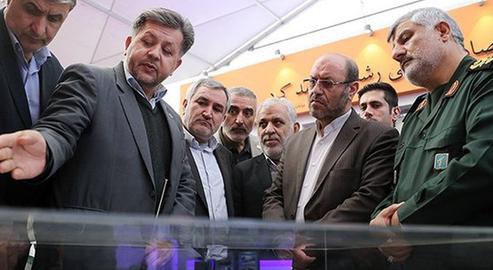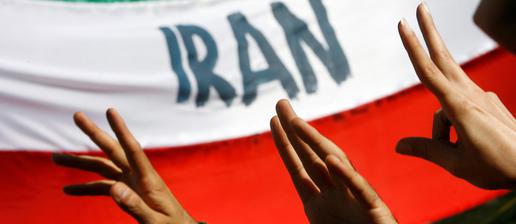The United States Treasury Department’s Office of Foreign Assets Control has added Iran’s petrochemicals industry to its anti-terrorism sanctions list, delivering a heavy blow to the fragile Iranian economy and to the already diminished revenues of the Iranian government.
Sanctions had been previously imposed on a number of Iranian petrochemical companies. But this is the first time the US Treasury has directly targeted the Iranian petrochemical industry – the Islamic Republic’s largest source of non-petroleum revenues. The new US sanctions, announced on Friday, June 7, apply to Persian Gulf Petrochemical Industry Co. (PGPIC), Iran’s most important petrochemical company and one of the biggest petrochemical holding companies in the world.
The US Treasury said it imposed the sanctions because of alleged financial support by PGPIC for the Revolutionary Guards’ Khatam al-Anbiya Construction Headquarters. Last month, US President Donald Trump had placed the Islamic Revolutionary Guard Corps (IRGC) on the United States’ list of Foreign Terrorist Organizations (FTOs); now the sanctions have been extended to big oil and gas commercial entities associated with Khatam al-Anbiya.
A network of 39 affiliated companies and sales agents registered outside Iran, including in the Philippines, the United Arab Emirates and the UK, have also been added to the sanctions list.
“This action is a warning that we will continue to target holding groups and companies in the petrochemical sector and elsewhere that provide financial lifelines to the IRGC,” Treasury Secretary Steven Mnuchin said in a statement.
This means that the US is continuing to tighten its sanctions noose around the neck of the Iranian economy.
What Now?
PGPIC accounts for 40 percent of Iran's petrochemical production capacity and 50 percent of its petrochemical exports. After oil and gas commodities exports, Iran’s government is dependent on revenues from exporting petrochemical products (i.e. derivatives from petroleum) to sustain its expenditures.
After sanctions on Iranian petroleum exports were imposed, petrochemical exports and those of metals such as iron, steel, aluminum, and copper were part of the remaining income streams available to the Iranian government. But less than a month ago, President Trump issued an executive order “to impose sanctions with respect to Iran’s iron, steel, aluminum, and copper sectors, the regime’s largest non-petroleum-related sources of export revenue.” This sector accounted for 10 percent of Iran’s non-petroleum exports. Ten percent was not previously so essential to government revenue – but with the fall in oil and gas exports these smaller sectors gained an outsize importance.
Before American sanctions on oil and gas exports, Iran exported 2.5 million barrels of oil per day; within six month of the sanctions taking effect, this fell to less than a million barrels a day. Insignificant levels of government revenue will remain intact if the new petrochemical exports sanctions have the same effect – raising questions about Iran’s ability to meet basic obligations such as the punctual payment of public sector salaries.
The Revolutionary Guards’ vast share of several Iranian industrial sectors has not only made the military institution a major economic player – it has also exposed Iran’s economy to vulnerabilities. American sanctions imposed on IRGC-affiliated entities now have ripple effects across Iran’s economy in any sector with active Guards involvement.
The US decision to designate the IRGC as a terrorist organization implicates any other group that has financial dealings with the Guards. All of these can now be accused of giving “financial support for terrorism” and may be charged or sanctioned.
The irony is that international sanctions imposed before the Iran concluded the 2015 nuclear agreement with the P5+1 countries is partly what brought the Revolutionary Guards into the Iranian economy – to bypass sanctions. Now this ad hoc solution has created a critical strategic gap in Iran’s economy. Sanctions targeting the IRGC, by extension, target the country as a whole; and the entire economy is being sacrificed because of one military institution.
Related Coverage:
How Will Sanctions on Metal Affect the Iranian Economy?, May 10, 2019
A Bleak Future for Iran's Job Market, May 3, 2019
Decline in Investment Across Iran After US Exit from the Nuclear Deal, April 27, 2019
Trump Designates Revolutionary Guards a Terrorist Organization, April 10, 2019
Can Iran Survive Record Inflation?, February 25, 2019
Iran’s Unemployment Crisis: Only 11 Million Full-time Jobs, January 23, 2019
Would Shaving Off Zeros from the National Currency Help the Iranian Economy?, January 15, 2019
Could a 20% Salary Increase Help State Employees?, December 5, 2018
Iran Rushing Toward 30 Percent Inflation, November 27, 2018
, October 30, 2018
How did Countries Deal with Iran During Previous Sanctions?, August 7, 2018
Expert Warns “Iran’s Economy is in a Death Spiral,” April 26, 2018
visit the accountability section
In this section of Iran Wire, you can contact the officials and launch your campaign for various problems

























comments